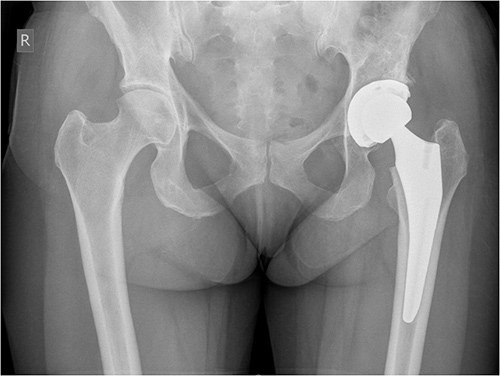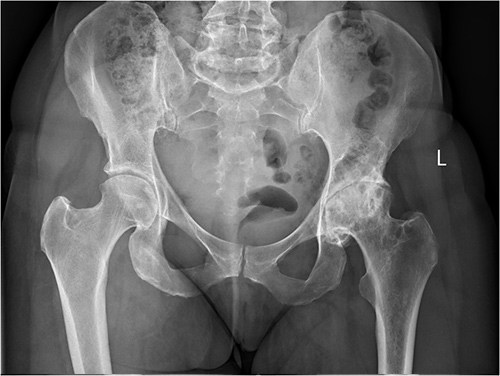Direct Anterior Hip Replacement
The minimally invasive anterior approach to hip replacement is a new technique to Ireland. Over the last few years, it has been rapidly gaining popularity around the world due to potentially shortened recovery times, less pain and improved mobility. Mr McKenna has a track record of success in this technique having performed hundreds of these operations in Ireland and the U.S.A.
Minimally Invasive Hip Surgery in the Southeast
The anterior approach to hip surgery is vastly different from the conventional approaches. It poses many advantages to patients who are considering hip surgery.
While the vast majority of patients are candidates for anterior hip replacement surgery, the final determination will be made after a thorough analysis by Mr. McKenna. The initial consultation and examination will shed light on the exact issue as well as your individual anatomy.
If you are a candidate for anterior hip replacement, the differences are as follows:
Direct Anterior Approach |
Conventional Approaches |
Average hospital stay is two to three days. |
Average hospital stay is four to five days depending on hospital and surgeon protocols and the patient. |
The hip joint is accessed between two muscle planes, without cutting through any muscle, potentially contributing to less pain and faster recovery. |
The hip joint is accessed by cutting though the major hip muscles. |
There are usually no precautions after surgery with regards to hip motion. The patient may sit in a regular seat and may sleep in any position that is comfortable. |
Usually patients will have specific “precautions” which mean they are recommended not to sit certain ways or cross their legs due to the risk of dislocation. Often times patients will be told to sleep with a pillow between their legs and use an elevated toilet seat because of the risk. |
The risk of hip dislocation (a complication which means the hip pops out of the socket) is extremely low (less than 0.5%) |
The risk of hip dislocation is about 1-5%. |
A short, more cosmetic operative scar, usually only 6-10cm in length. |
Scars vary from 15-30cm in length. |
There is increased risk of numbness on the lateral (outside) aspect of the leg because of stretching of a sensory nerve. This usually resolves in 4 weeks to 2 years but a very small percentage of patients have continued numbness on the outside of the thigh. |
Usually numbness is only around the incision itself. |
While the benefits of the anterior approach is a faster recovery, at 3 months, there is no discernable difference in patient satisfaction between approaches. |
At three months, patients who have had the conventional approaches have equal amounts of pain relief and independence of gait compared to the anterior approach. |
Mr McKenna feels that the true benefit after any replacement surgery with regards to “recovery time” is really a patient-based concept. Some patients will recover faster and some patients will recover slower. This is often based on the baseline activity of the patient BEFORE surgery. Someone that is very healthy and very fit and active before surgery has the potential for a faster and easier recovery, but again it is different for every patient. Regardless of whether the patient has an “anterior” or “conventional” approach to the hip the surgery should be done by following the critical concepts of hip replacement surgery:
- An efficient surgery should be performed
- Blood loss should be minimized
- The replacement parts should be placed in an optimal position
- The hip joint must be stable at the end of the procedure
As important as the surgery is the pre- and post-operative management. The patient must understand the recovery process before undergoing the surgery. Mr McKenna strongly believes that postoperatively pain management and early mobilization are critical to the success of the operation.
Anterior Hip Replacement Procedure
Once the patient has been properly anesthetized, Mr McKenna begins the anterior hip replacement, which is also known as a minimally invasive anterior hip replacement. The incision is located along the front of the thigh. This is drastically different from the lateral or posterior approaches, in which the incision is located along the side or the back of the leg.
Once the incision is made, Mr. McKenna can access the hip joint by simply separating the underlying muscles. Because the anterior approach does not require cutting through any muscles, it potentially leaves the patient in less pain after surgery, and may result in shortened recovery time.
Once the hip joint is exposed, Mr. McKenna removes all damaged or arthritic cartilage from both the ball and the socket. Once this is done, both the ball and the socket are replaced with prosthetic components using precision techniques developed over many years.
Once the prosthetic components have been successfully installed and Mr McKenna is satisfied with their placement, he closes the incision.
Anterior Hip Replacement Recovery
The anterior approach to hip replacement is also known as a tissue-sparing approach. This is because it cuts through the minimum amount of muscle and tissue in order to access the hip joint. Through this technique, the anterior approach seeks to help patients achieve full mobility and bear full weight immediately after surgery.
This is a stark contrast to other approaches, which may require six to eight weeks of “precautions,” operating under strictly regulated activities. Hip precautions are very restrictive and usually include the following:
- Avoid the combined movement of bending your hip and turning in your foot.
- You should sleep with a pillow between your legs for 6 weeks.
- Avoid crossing your legs and bending your hip past a right angle.
- Avoid low chairs.
- Avoid bending over to pick things up.
- An elevated toilet seat should be used.
For an anterior hip replacement, hip precautions are NOT necessary.
Physiotherapy is part of the recovery process. Your body will need to adjust to the hip implant, so the physiotherapists will prescribe exercises to promote mobility and hip function following the surgery.
Click on the topics below to find out more from the orthopaedic connection website of American Academy of Orthopaedic Surgeons.


